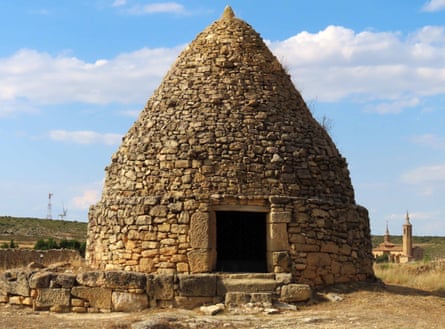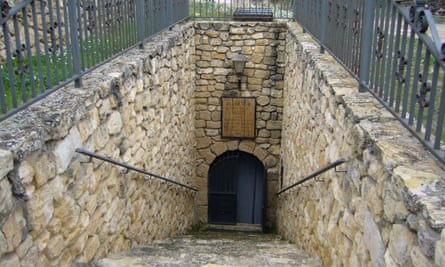No two are alike: some look like stone igloos, others more like deep pits. Now a regional government in Spain wants some of its network of 500 ice houses officially declared as assets of cultural interest.
During Europe’s “mini ice age” that lasted from about 1600 to 1850, snow often fell in places that had never seen it before. The prolonged cold snap led to the widespread construction of ice houses, nowhere more so than in Aragón, which produced some extraordinary arquitectura del hielo (ice architecture) in the form of vast, stone refrigerators.
The northern Spanish area is known for its extreme temperatures and the neveras, or ice houses, as well as being remarkable for their architecture, were an ingenious way of conserving enough ice and snow from winter to use during the hot summer months.

Alberto Bayod, a historian who has made a study of the Aragón ice houses, says the beginning of the mini ice age coincided with a rise in the use of snow and ice in medicine, especially in the treatment of fever, inflammations, haemorrhages and burns.
In the work Alivio de los Sedientos (Thirst Relief), a medical treatise published by Francisco Micón in 1576, he exalts the health benefits of “cold drinks, both water and wine, chilled with snow, in order to keep healthy and cure many ills”.
Bayod said: “In Aragón just about every town or village had its own ice house for medical uses, for cold drinks and for preserving food,” adding that food was never stored in the ice houses themselves and they did not serve as fridges in the modern sense.
The ice houses come in many forms. The majority are circular stone structures consisting of deep, stone-lined pits, sometimes barely visible from the surface. Others, such as the igloo-like ice house in Fuendetodos, birthplace of the painter Francisco Goya, are more prominent. Fuendetodos supplied ice to Zaragoza, 30 miles (50km) to the north.
The snow and sometimes ice were packed on to a wooden platform in layers about 50cm (19.6in) thick separated by straw and sawdust which acts as insulation. The stone walls were also insulated with straw.
In the spring the ice was dug out and cleaned up and sold limpio de polvo y paja (without dust and straw), an expression that survives today meaning no strings attached.
Some ice houses were vast, up to 18 metres in diameter, and capable of storing thousands of tonnes of snow. Many of the largest are in Lower Aragón, which borders Valencia, which exported fish to the interior.
The religious prescription to eat fish on a Friday led to a thriving salt cod business, mostly run by Basques, as a way of supplying preserved fish to areas hundreds of miles from the sea. However, fresh fish also found its way inland.

“Fresh fish transported from the coast of Valencia to Zaragoza passed through Lower Aragón and it seems likely that these large ice houses ensured that the fish was fresh when it arrived in the interior,” said Bayod.
He said it was not clear why the ice houses fell into disuse in the mid-19th century as the commercial production of ice was not yet advanced in Spain. People began dumping their garbage and dead animals in them and it was not until the 1990s that restoration work began.
Now the Aragón tourist authority has organised a tour of six bóvedas de frío (cold vaults) in Lower Aragón.
“The many peculiarities of these spectacular ice houses, which share common features but are also quite distinct from one another … are a faithful reflection of a pre-industrial activity, commonplace between the 16th and 19th centuries, that has since disappeared,” said Bayod.
The oldest record of an ice house dates back to about 1700BC in Mesopotamia.
